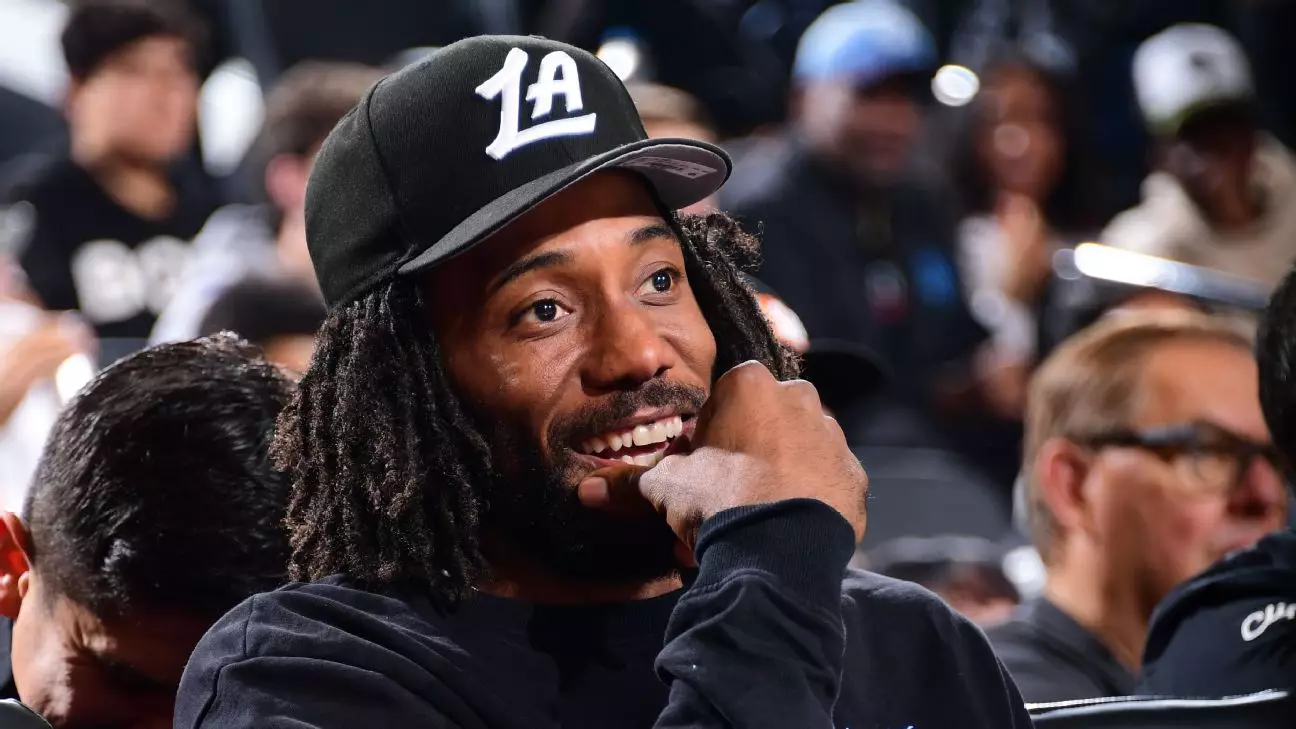The LA Clippers find themselves teetering on the brink of their season’s most pivotal moment, with the prospect of a significant player, Kawhi Leonard, making a return after an extended absence due to knee issues. Leonard, 33, has dominated headlines not just for his prowess on the court but for the challenges he’s faced with injuries that have sidelined him for much of his career with the Clippers. Now, with rumors swirling about his potential return to game action, the impact of his presence—or absence—on the team’s dynamics and performance cannot be overstated.
Leonard’s return to practice is a glimmer of hope for a Clippers team that has navigated a challenging start to the season. His participation on Tuesday marked the first time he took part in team drills since last season, a clear indicator of his progress as he works through right knee inflammation. Coach Ty Lue’s positive remarks about Leonard’s performance during practice set a hopeful tone for fans and teammates alike: “Really good sign, just seeing him out there moving, moving well.” Leonard’s ability to engage in offensive and defensive drills—albeit without contact—signals that he may soon be ready to reclaim a role as a key contributor.
The effects of Leonard’s absence have been felt throughout the Clippers’ franchise, particularly as they look to solidify their status within a competitive Western Conference. Leonard’s injury issues have been chronic, including a significant ACL tear that kept him out for an entire season. With that background, any sign of progress raises expectations and perhaps hopes for the team, which has found itself languishing in sixth place despite a respectable 14-11 record.
Interestingly, the Clippers have not floundered without their marquee player. Instead, they have exhibited surprising resilience, showcasing depth and a collective grit that some may not have anticipated. The defense has been particularly commendable, ranking sixth in the league with an impressive defensive rating. This suggests that, while the team is markedly better with Leonard, they may have found ways to compensate for his absence through teamwork and individual breakthroughs, like Norman Powell’s significant leap in scoring averages.
The rise of Powell—who has jumped from 13.9 points to 23.6 points per game—highlights the potential for other players to step up in the clutch moments. Such performances could also be critical during Leonard’s rehabilitation process, as they afford him the luxury of managing his return without undue pressure to immediately regain peak form. This encapsulates Lue’s strategy of fostering an environment where players can share the load, leaning into the unpredictability of a game that demands adaptability.
While excitement builds around Leonard’s potential return, Lue is wisely tempering expectations, emphasizing the importance of a careful and calculated comeback. “We just want to make sure he’s 100%,” Lue stated, stressing the necessity of not rushing Leonard back into game action. With an eye on the long-term health of one of the league’s top talents, the coaching staff is committed to ensuring he doesn’t return to the lineup until he’s truly ready. Such a strategy illustrates a shift in priorities—from a short-term push to the playoffs to maintaining the health of core players for sustained success.
Leonard’s journey through injury has been marked by a resilient mentality, reflecting not only a desire to play but a commitment to ensuring he sufficiently rehabilitates. Lue’s acknowledgment of this mindset is essential; it underscores the psychological aspect of recovery from injuries—so often overlooked in discussions focused purely on physical readiness.
The Clippers understand that while they might welcome a fully fit Kawhi Leonard back into their lineup, the timeline for that return is uncertain. The team’s future hinges not only on his physical capabilities but also on his ability to regain confidence in his game. Upon his return, fans might see a slightly altered version of the player who ruled the court—questions about whether he can reach or surpass his previous form will linger.
Ultimately, the Clippers are faced with a dual challenge: continuing to stay competitive in Leonard’s absence while fostering a supportive environment for his recovery. As they navigate this delicate balance, the lessons learned during this phase could define not only this season but the trajectory of the franchise in the coming years, particularly regarding their championship ambitions and player health management. All eyes will be on the Clippers as they seek to harmonize a return to form with the spirit of resilience that has characterized their start to the season.


Leave a Reply